
Sunday evenings at my house were special because of my grandmother’s homemade chili. The smell of spices would fill the kitchen, attracting everyone. It was more than just a meal; it was a tradition that brought us together.
Watching her cook was magical. She turned simple ingredients into a flavorful dish that warmed our hearts. Each bite was a journey of taste, from the seasoned meat to the spicy kick of jalapeños.
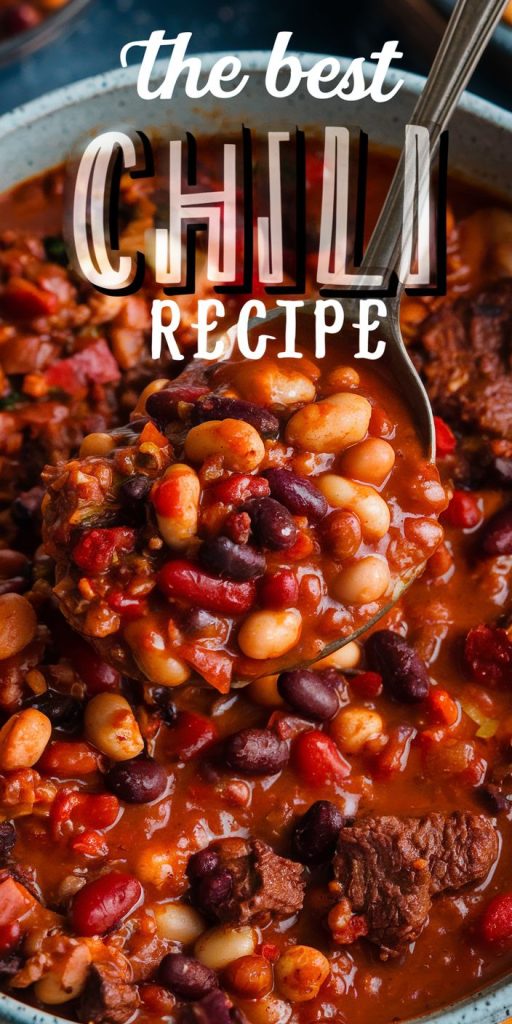
This tradition made me curious about all things chili. Whether you love traditional chili or want to try something new, there’s a world of flavors to explore. Let’s discover the rich world of chili together, where every recipe has its own story.
Key Takeaways
- Chili varies widely in flavor and preparation methods across different regions.
- Homemade chili can be made with various key ingredients to suit personal taste.
- A great chili recipe combines spices and cooking techniques to create depth and warmth.
- Understanding the history behind chili adds richness to your cooking experience.
- Chili can be easily customized, making it a versatile choice for any gathering.
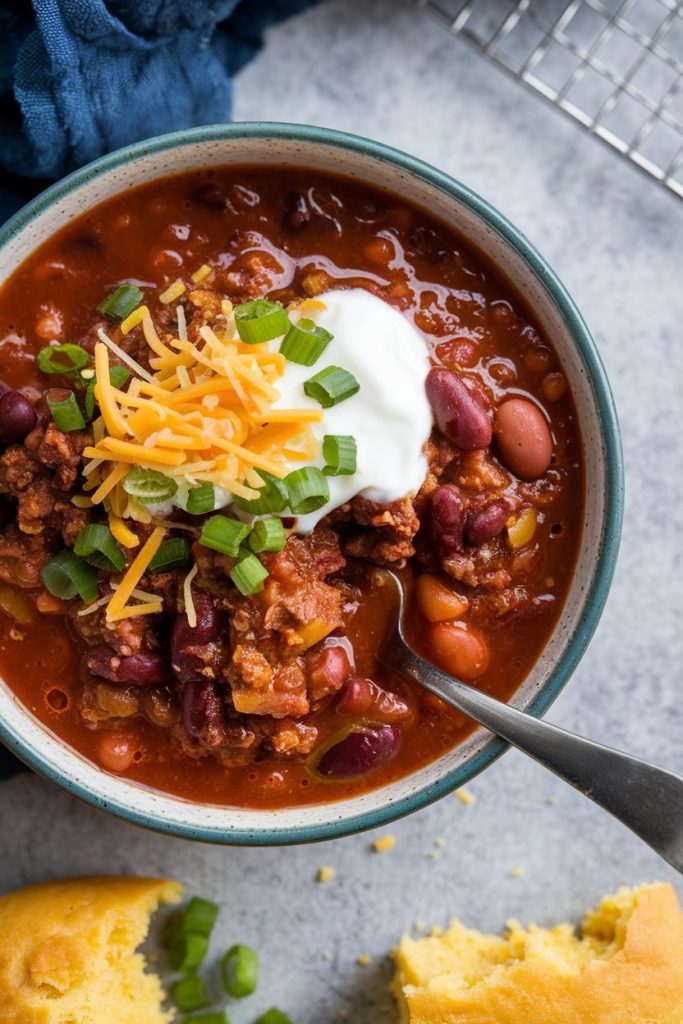
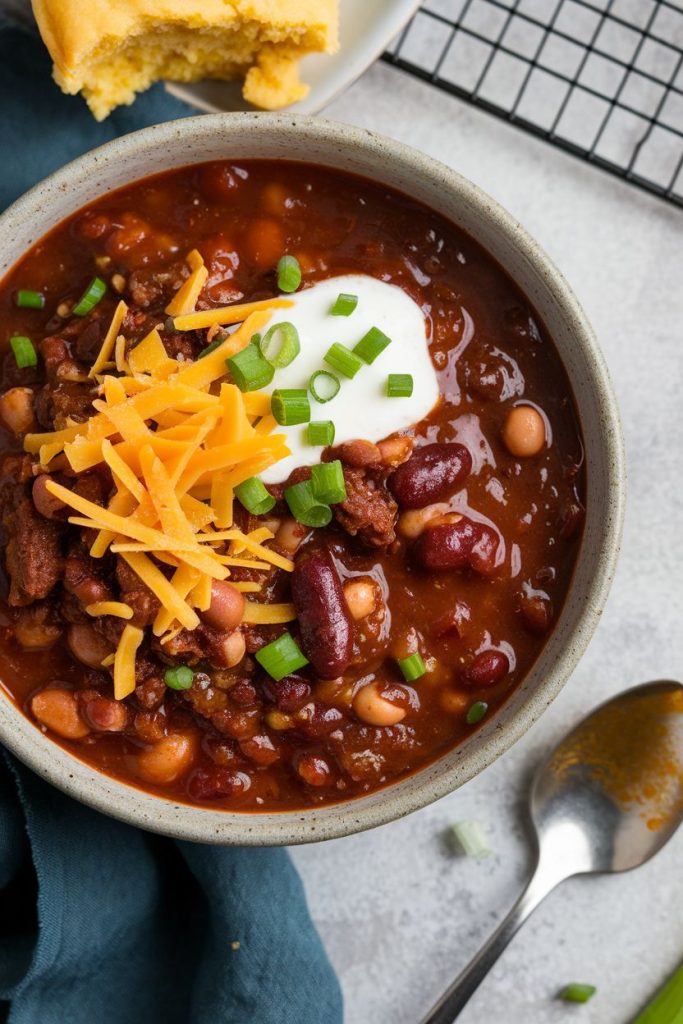
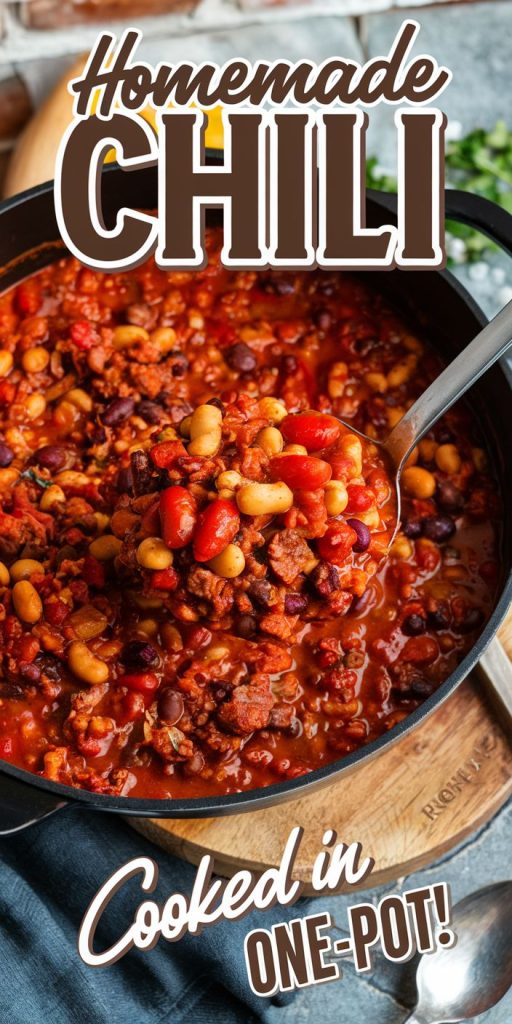
What is Chili?
Chili is a hearty dish that warms the soul. It has a rich background, influenced by many cultures. The dish started with the indigenous peoples of the Americas, who used local ingredients.
Traditional chili mixes meat, beans, tomatoes, and spices. The flavors and preparations vary, showing the unique regional chili styles across the United States.
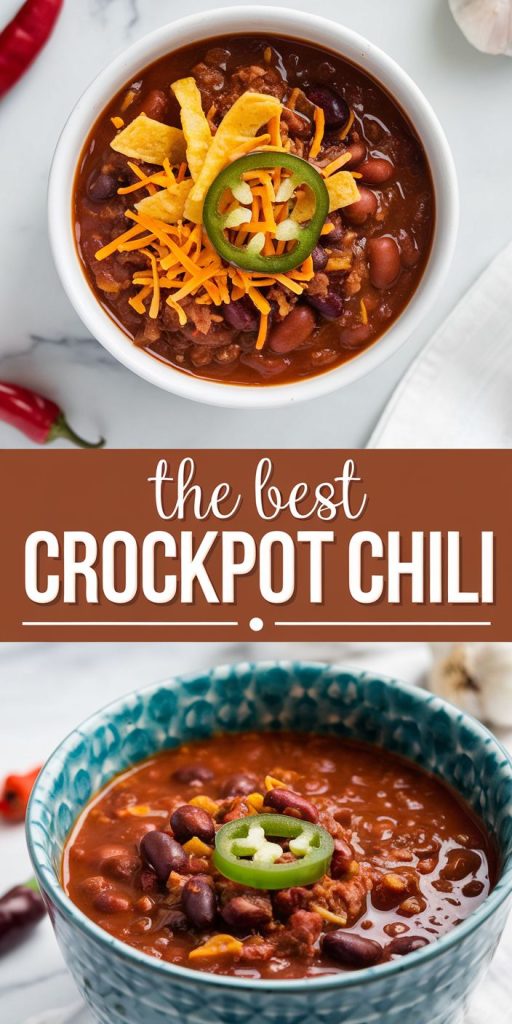
A Brief History of Chili
The chili history is interesting. It began with Native American tribes using chili peppers in their cooking. Spanish settlers later added their own traditions, shaping chili’s evolution.
By the 19th century, chili was linked to Texas, often made with beef and simple spices. It became popular across the country, leading to many different recipes and styles.
Different Regional Styles
Chili’s beauty is in its diversity. Each region adds its own twist to this versatile dish. Here are some key regional chili styles:
- Texas-Style Chili: Known for its meat focus, often using brisket or ground beef, and minimal beans or tomatoes.
- Cincinnati Chili: This style uses spices like cinnamon and allspice and is served over spaghetti, creating a unique fusion.
- New Mexico Chili: Known for its red and green chilies, this variant offers a distinct flavor profile that showcases local peppers.
- Vegetarian Chili: A healthier option that replaces meat with beans, lentils, and various vegetables, appealing to plant-based diets.
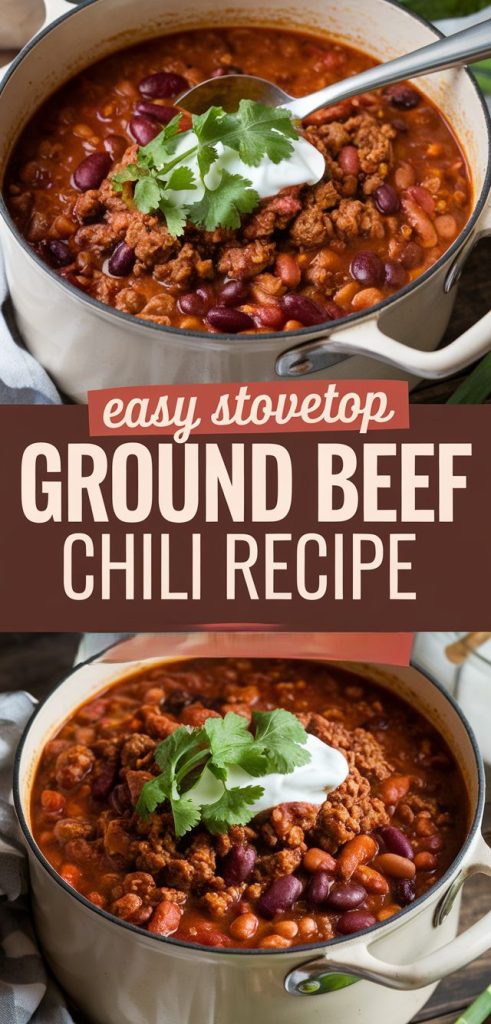
Key Ingredients in Chili
Creating the perfect chili starts with picking the right key chili ingredients. This dish can vary greatly, depending on what you like and where you’re from. A big question is whether to add beans in chili. Let’s dive into both sides of this debate.
Beans vs. No Beans
Adding beans in chili sparks strong opinions. Some say beans shouldn’t be in chili, believing it should only have meat and spices. But, beans add texture, flavor, and nutrients. It’s really up to you. Try both to see which you prefer.
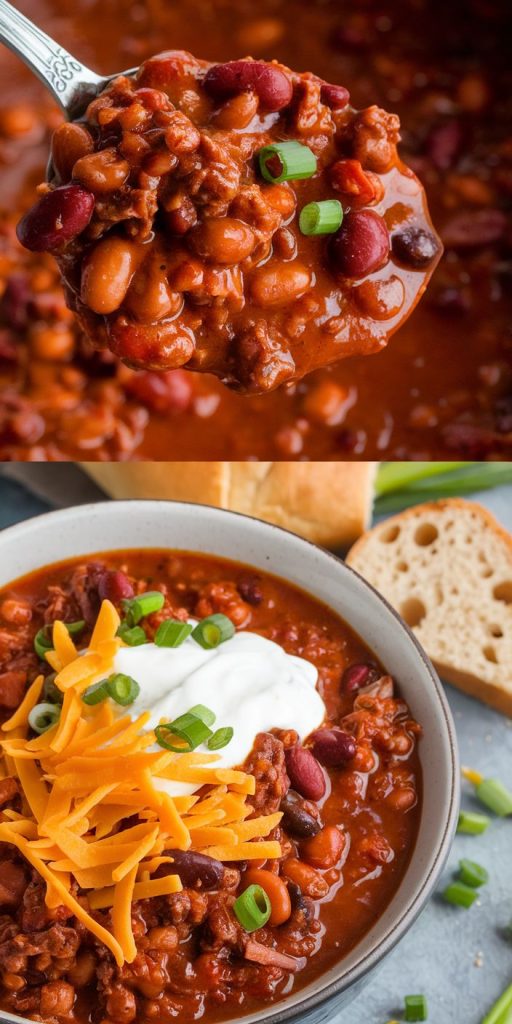
Types of Meats for Chili
Now, let’s look at the types of meat for chili. Ground beef is popular, but pork and turkey offer different tastes. I often use chuck roast for a richer flavor. Each meat changes the taste and texture. You can also try plant-based proteins for different diets.
Essential Spices and Seasonings
Spices are crucial for a great chili. They add depth and a wonderful smell. Cumin, chili powder, and paprika are key. Adjusting the spices can make your chili truly special. Don’t be afraid to experiment with flavors.
| Key Ingredient | Notes | Flavor Profile |
|---|---|---|
| Ground Beef | Common choice, hearty | Rich and savory |
| Pork | Less common but flavorful | Sweet and smoky |
| Turkey | Lean option | Mild and slightly sweet |
| Beans | Optional, add texture | Earthy and creamy |
| Spices | Cumin, chili powder, paprika | Warm, bold, and spicy |
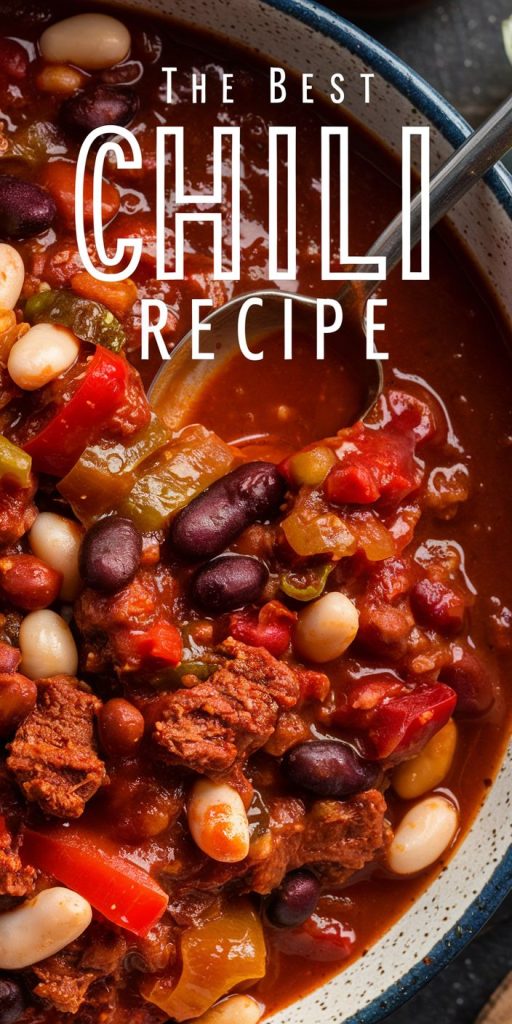
Equipment You’ll Need
When making chili, the right tools are key. You’ll need different equipment for slow cooker chili and stovetop chili. I’ll show you the best kitchen tools for each method to make perfect chili.
Cooking Methods: Slow Cooker vs. Stovetop
Deciding between slow cooker and stovetop chili depends on your schedule and taste. Here’s a quick comparison:
Essential Kitchen Tools
Having the right tools makes cooking easier. Here are the must-haves for chili:
- Large pot or Dutch oven for stovetop chili
- Slow cooker for easy cooking
- Measuring spoons for exact spice amounts
- Wooden spoon for stirring
- Cutting board and knife for prep
- Can opener for beans and tomatoes
Chili Recipe
This tradition made me curious about all things chili. Whether you love traditional chili or want to try something new, there’s a world of flavors to explore. Let’s discover the rich world of chili together, where every recipe has its own story.
Ingredient List
Main Ingredients:
- Ground beef: 1 lb (or substitute with turkey, pork, or plant-based protein)
- Onion: 1 large, chopped
- Garlic: 3 cloves, minced
- Bell peppers: 2 medium, chopped (any color)
- Jalapeños: 1-2, diced (optional, for heat)
- Canned diced tomatoes: 2 cans (14 oz each)
- Tomato paste: 2 tbsp
- Beans (optional): 1 can each of kidney beans and black beans, drained and rinsed
- Beef or vegetable broth: 1 cup
- Corn kernels: 1 cup (optional, for sweetness)
Spices and Seasonings:
- Chili powder: 2 tbsp
- Ground cumin: 1 tbsp
- Smoked paprika: 1 tsp
- Oregano: 1 tsp
- Salt: To taste
- Black pepper: To taste
- Brown sugar or honey: 1 tsp (optional, for balance)
- Apple cider vinegar or lime juice: 1 tsp (for acidity)
Garnishes (Optional):
- Shredded cheese
- Sour cream
- Chopped fresh cilantro
- Sliced jalapeños
- Diced avocado
Step-by-Step Instructions
1. Prepare Your Ingredients
- Dice onions, garlic, and bell peppers.
- Rinse and drain beans if using.
- Measure out spices to ensure smooth cooking.
2. Sauté the Aromatics
- Heat a large pot or Dutch oven over medium heat.
- Add a splash of oil and sauté the chopped onions until translucent (about 3-4 minutes).
- Stir in minced garlic and cook for an additional minute until fragrant.
3. Cook the Meat
- Add ground beef (or chosen protein) to the pot.
- Break it into small pieces using a wooden spoon, cooking until browned (6-8 minutes).
- Drain excess fat if necessary.
4. Add Vegetables
- Toss in the chopped bell peppers and jalapeños.
- Stir and cook for 3-4 minutes until they begin to soften.
5. Incorporate Spices
- Sprinkle in chili powder, cumin, smoked paprika, oregano, salt, and black pepper.
- Stir to coat the meat and vegetables evenly, letting the spices toast slightly for enhanced flavor.
6. Build the Base
- Add the canned diced tomatoes, tomato paste, and broth.
- Stir to combine, ensuring the tomato paste dissolves.
7. Simmer the Chili
- Bring the mixture to a gentle boil, then reduce the heat to low.
- Cover and simmer for 30-45 minutes, stirring occasionally. This allows the flavors to meld beautifully.
- Adjust consistency by adding more broth if it’s too thick.
8. Add Beans (Optional)
- Stir in the drained beans during the last 15 minutes of cooking to warm them through.
9. Balance the Flavors
- Taste and adjust the seasoning with additional salt, pepper, or chili powder as needed.
- Stir in brown sugar or honey for sweetness and finish with apple cider vinegar or lime juice for a bright, tangy note.
10. Serve and Garnish
- Ladle the chili into bowls and garnish with your choice of shredded cheese, sour cream, fresh cilantro, or sliced jalapeños.
- Serve with cornbread, rice, or a crisp side salad for a complete meal.
Enjoy the heartwarming flavors of this chili, a dish perfect for gatherings, cozy evenings, or as a versatile leftover base for baked potatoes, chili mac, or quesadillas!

Popular Chili Variations
Exploring different chili variations is a fun culinary journey. Each style offers a unique twist and flavor. Let’s look at some popular chili variations that I find irresistible.
Vegetarian Chili
Vegetarian chili is more than a meat substitute; it’s full of flavor. It uses beans and vegetables, like bell peppers and onions, for a satisfying dish. I love making it with kidney beans, black beans, and fresh corn for a colorful, nutritious meal.
White Chili
White chili is different from traditional chili. It uses chicken, white beans, and green chilies for a creamy base. I add cilantro and lime juice at the end for a fresh, savory taste.
Fajita Chili
Fajita chili is a modern twist on classic chili. It combines grilled bell peppers, onions, and marinated meat for a unique flavor. I use chicken or steak, seasoned with bold spices, for a delicious chili perfect for gatherings.

| Chili Variation | Main Ingredients | Flavor Profile |
|---|---|---|
| Vegetarian Chili | Beans, vegetables, spices | Hearty, flavorful, and nutritious |
| White Chili | Chicken, white beans, green chilies | Creamy, savory, with a hint of freshness |
| Fajita Chili | Bell peppers, onions, grilled meat | Bold, zesty, with a twist of fajita spices |

Tips for Perfecting Your Chili
Perfecting chili is more than just a recipe. It’s about finding the right mix of flavors. A great chili has layers of taste and the perfect heat for everyone.
Balancing Flavors
Getting the taste just right is key. I aim for a mix of sweet, spicy, and savory. Here’s how:
- Sweetness: A bit of brown sugar or honey can balance the heat and bring out other flavors.
- Savory Elements: Garlic, onions, and bell peppers add depth and richness.
- Acidity: Vinegar or lime juice can brighten the taste.

Adjusting Heat Levels
Knowing what your guests like is crucial. Some like it hot, others not so much. Here’s how to adjust:
- Begin with a small amount of chili powder and taste as you go.
- For varying heat, add fresh peppers. Jalapeños are milder, habaneros are hotter.
- For a family-friendly chili, add more beans or veggies. They help reduce heat without losing flavor.
| Component | Effect on Flavor | How to Adjust |
|---|---|---|
| Sweetness | Balances heat and enhances flavors | Add sugar or honey |
| Savory | Provides depth | Incorporate onions and garlic |
| Acidity | Brightens the dish | Add vinegar or lime juice |
| Heat | Defines the chili’s character | Adjust with chili powder or fresh peppers |

Serving Suggestions: What to Pair with Chili
When you serve chili, the right toppings and side dishes can make it special. I love adding different toppings to my chili to make it even better. Let’s look at some great toppings and side dishes that make a meal complete.
Toppings to Consider
- Shredded Cheese: Cheddar, Monterey Jack, or Pepper Jack add a creamy texture.
- Sour Cream: A dollop cools down the heat and complements the spices.
- Chopped Onions: Fresh or pickled onions provide a crunchy contrast.
- Sliced Jalapeños: Add a zesty kick if you really want to amp up the spice.
- Cilantro: A sprinkle of fresh cilantro brightens up the dish.
Side Dishes That Complement Chili
Choosing the right side dishes can elevate your chili meal. Some of my favorites include:
- Cornbread: Soft, buttery cornbread is the perfect partner for soaking up the chili.
- Rice: A bowl of fluffy rice balances the dish beautifully.
- Fresh Salad: A crisp side salad adds freshness and crunch to the meal.

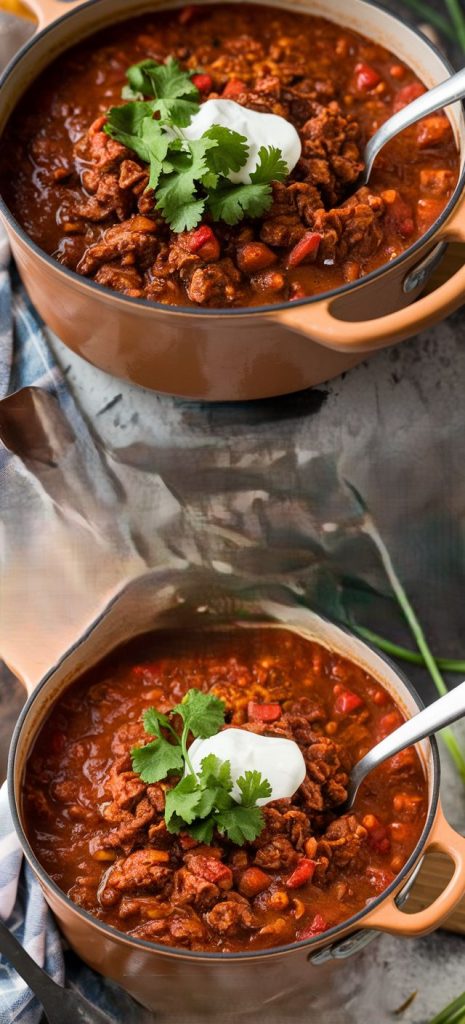
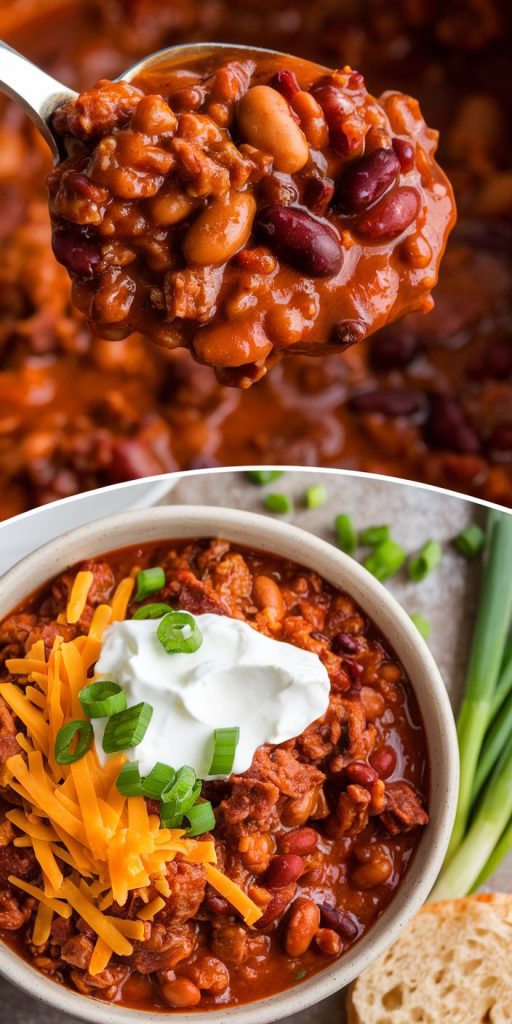
Leftover Chili Ideas
Leftover chili is a great chance to make new dishes. I love turning my leftover chili into tasty meals. With a few tweaks, you can make delicious creations from your leftovers. Here are some of my top leftover chili recipes to try.
Creative Recipes Using Leftovers
- Chili-topped baked potatoes: This dish is a hearty twist on the classic baked potato. Simply bake your potatoes, scoop out some of the insides, mix it with your leftover chili, and then pile it back into the skins. Top with cheese and green onions for added flavor.
- Chili quesadillas: Spread some leftover chili on a tortilla, sprinkle with cheese, and fold in half. Cook on a skillet until golden brown, and enjoy with sour cream or salsa.
- Chili mac: Combine leftover chili with cooked macaroni, stir in some cheese, and bake for a comforting casserole that’s always a hit.

Freezing and Storing Chili
Proper freezing is key for chili storage tips. Cool the chili completely before putting it in an airtight container. Make sure to label it with the date. Chili can stay good in the freezer for up to three months.
Thaw it in the fridge overnight, or reheat it quickly in a pot or microwave.
Hosting a Chili Cook-Off
Hosting a chili cook-off is a great way to gather friends and family. It’s a fun event that can be memorable for everyone. Here are some ideas to make your event stand out.
Planning the Event
First, pick a good date and place for your contest. A backyard or park is perfect for a fun atmosphere. Then, make sure to give clear rules to participants.
- A description of the rules, including portion sizes and optional ingredients.
- A timeline for arrival, cooking, and tasting.
- A reminder about any necessary cooking equipment participants should bring.
Set up a tasting area with tables and chairs. This encourages mingling and makes tasting easier. Offer drinks and sides to go with the chili. Good signs help guests find their favorite chili.
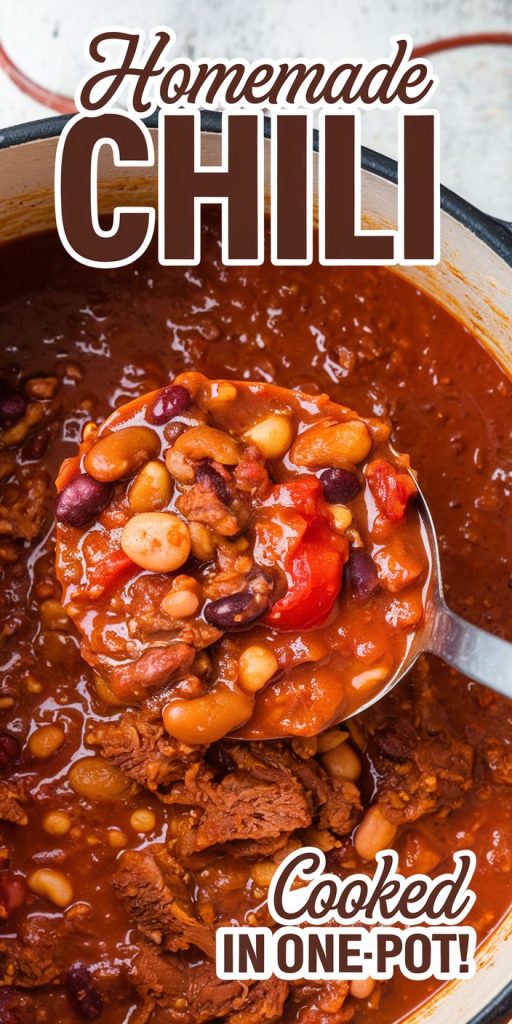
Judging Criteria
To judge fairly, set criteria for flavor, creativity, and texture. A panel will score each chili based on these.
| Criteria | Description | |
|---|---|---|
| Flavor | Overall taste and spice mix. | |
| Creativity | Unique ingredients or recipes. | |
| Texture | How the chili feels in your mouth. |
This way, the event is fun and fair. It’s all about enjoying and sharing chili stories and recipes.
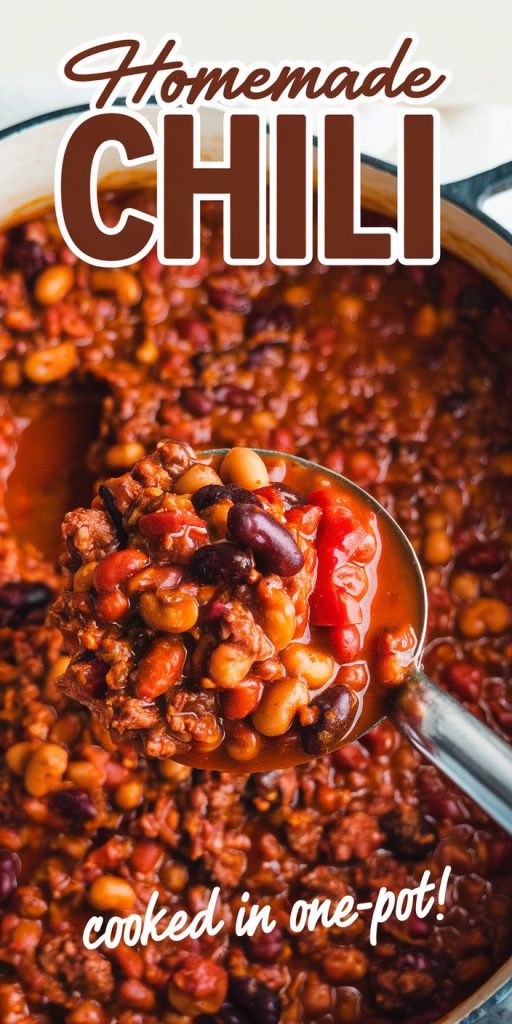
Common Mistakes to Avoid
Everyone makes mistakes when cooking chili, but knowing them can improve your experience. It’s important to find the right balance between overcooking and undercooking. This ensures your chili has the perfect texture and flavor. Paying close attention to timing is key.
Let’s look at some common mistakes to avoid.
Overcooking vs. Undercooking
One big mistake is overcooking or undercooking your ingredients. Overcooking can make beans mushy and veggies fall apart. Undercooking means they won’t soak up the flavors that make chili great.
To avoid this, cook your chili on low heat and taste it often. Here’s a quick guide to help you:
| Ingredient | Ideal Cooking Time | Overcooked Signs | Undercooked Signs |
|---|---|---|---|
| Beans | 1-2 hours | Mushy, falling apart | Firm, crunchy |
| Ground Meat | 30-45 minutes | Dried out, crumbly | Pink, greasy |
| Vegetables | 20-30 minutes | Disintegrated, mushy | Raw, hard |
Skipping the Seasoning
Another common mistake is not using enough spices and seasonings. Seasoning is what makes your chili taste great. Skipping this can leave your dish tasting bland.
I season as I go and adjust the flavors. Remember, spices get better as they cook. Try different ones like cumin, paprika, and oregano. Taste your chili often and add salt and spices as needed.

Conclusion and Final Thoughts
Looking back, making chili is more than just cooking. It’s about sharing joy and satisfaction. Every pot of chili is a chance to try something new and exciting. It’s a way to bring people together and make memories.

Enjoying Your Chili Adventures
Start your own chili adventures today. Try new beans, spices, and even different meats. Share your creations and ask for feedback. It’s a fun way to make something special and personal.
Encouragement to Experiment
Chili is all about having fun and being creative. Whether you stick to a classic recipe or mix things up, enjoy the process. Perfecting your chili recipes can really improve your cooking skills and deepen your love for the dish. So, get cooking, share your stories, and have fun!